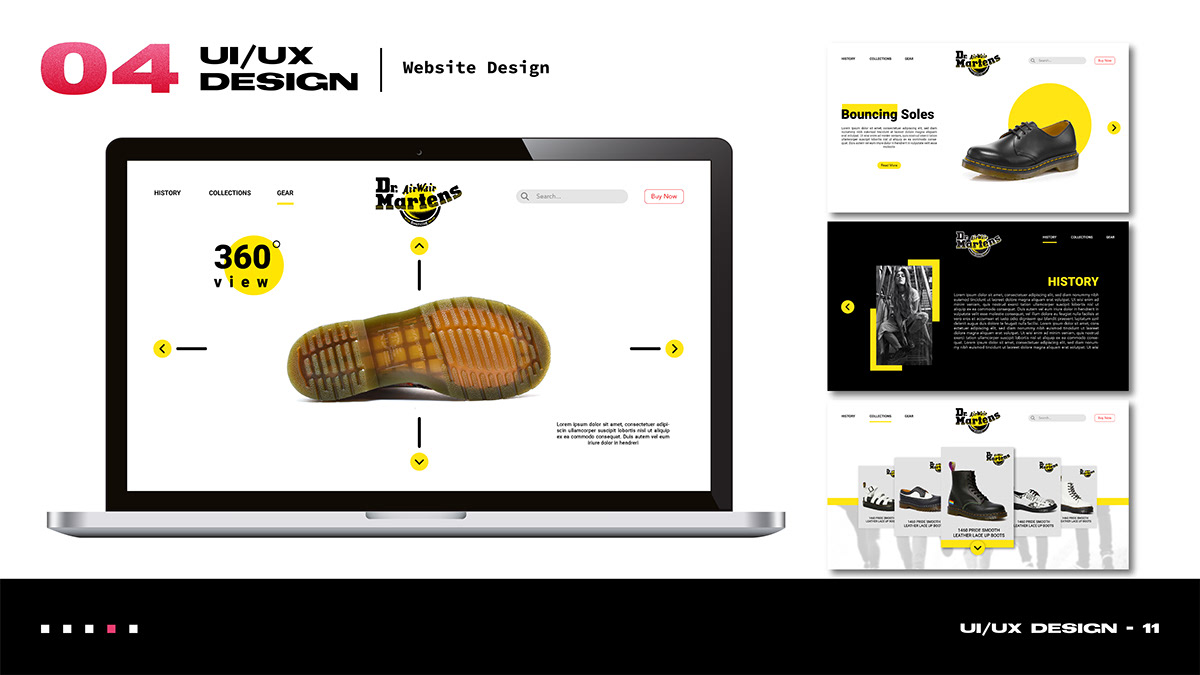Hey there, creative minds! If you’re looking to showcase your work and connect with fellow artists, Behance is the place to be. This platform isn’t just a gallery for your projects; it’s a vibrant community where creativity thrives. Why is it so essential? Well, it allows you to gain visibility, receive feedback, and even land job opportunities. Think of it as your personal stage in the vast arena of design and art. Ready to dive in? Let’s explore how to make your portfolio stand out!
Understanding the Elements of a Great Portfolio
Creating a stellar portfolio on Behance involves more than just uploading your work. It’s about telling a story and showcasing your unique style. Here are some key elements to consider:
- Curated Projects: Select your best work that represents your style and skills. Aim for quality over quantity. A few exceptional pieces can leave a stronger impression than a lot of mediocre ones.
- High-Quality Images: Use crisp, high-resolution images. Your artwork deserves to be seen in the best light! Consider using mockups for your designs to present them in real-world scenarios.
- Project Descriptions: Don’t just let your visuals do the talking. Write engaging descriptions that explain your thought process, the challenges you faced, and how you overcame them. This adds depth to your work and helps viewers connect with your journey.
- Consistency: Aim for a cohesive look throughout your portfolio. Use similar color schemes, typography, and layout styles to create a professional appearance. This consistency builds your brand identity.
- Process Work: Include behind-the-scenes content, such as sketches, drafts, or mood boards. This not only showcases your creativity but also gives insight into your creative process.
- Feedback and Iteration: Don’t shy away from asking for feedback. Engage with the community by commenting on others' work and responding to comments on your projects. Iterating based on constructive criticism can elevate your portfolio even further.
- Links and Call to Action: If you have a personal website or social media profiles, link them! Encourage visitors to explore more about you and your work.
Remember, a great portfolio is not just about the final product; it’s about the journey you take to create it. Take your time, keep refining, and most importantly, let your passion shine through. Happy creating!
Also Read This: The Best Practices for Organizing Images on Behance to Create a Stunning Portfolio
3. Step-by-Step Guide to Setting Up Your Behance Portfolio
Setting up a Behance portfolio might seem daunting at first, but with a little guidance, you can make it an easy and rewarding process. Let’s break it down step by step:
- Create Your Account: First things first, go to Behance.net and click on the “Sign Up” button. You can sign up using your Adobe ID or even link your social media accounts for a quicker setup.
- Choose Your Username Wisely: Your username is your brand; make it memorable! It could be your name or something creative that reflects your style. Keep it simple and easy to spell.
- Fill Out Your Profile: Once you’re in, head to your profile settings. A complete profile helps you stand out. Here’s what to include:
- Profile Picture: Use a clear, professional photo of yourself.
- Banner Image: This is the first thing people see, so choose something that reflects your personality or work.
- Bio: Write a short bio that captures who you are and what you do. Keep it engaging!
- Skills and Tools: List your skills and the tools you’re proficient in. This will help potential clients and collaborators find you.
- High-Quality Images: Use high-resolution images to showcase your work.
- Descriptive Titles: Give each piece a title that draws people in.
- Project Descriptions: Write a brief description that explains your project, your process, and the outcome.
And there you have it! Follow these steps, and you’ll have a solid foundation for your Behance portfolio that’s ready to impress.
Also Read This: How to Rotate Images on Behance for Better Presentation and Alignment
4. Showcasing Your Best Work Effectively
Now that your Behance portfolio is set up, the next step is showcasing your best work effectively. It’s not just about putting everything out there; it’s about curating your projects to tell a compelling story. Here are some tips to help you shine:
- Choose Projects Wisely: Select a range of projects that highlight your skills and versatility. Think about including:
- Your most recent work.
- Projects that received positive feedback.
- Works that showcase different styles or techniques.
By following these strategies, you’ll not only showcase your best work but also create a portfolio that captures attention and resonates with your audience. Happy creating!
Also Read This: How to Embed an MP4 on Behance for Video Creators
5. Tips for Writing Engaging Project Descriptions
When it comes to showcasing your work on Behance, a captivating project description can make all the difference. Your description should not only provide context but also engage your audience emotionally. Here are some essential tips to help you craft descriptions that resonate:
- Start with a Hook: Begin with an intriguing statement or question that draws readers in. For instance, "Ever wondered how a simple idea can transform into a stunning visual narrative?"
- Tell a Story: Use storytelling to guide viewers through your creative process. Explain the inspiration behind the project, the challenges you faced, and how you overcame them. This humanizes your work and makes it relatable.
- Use Clear Language: Avoid jargon and overly technical terms. Instead, aim for clarity and simplicity. For example, instead of saying "utilized innovative design principles," you could say "used fresh design ideas to make the project stand out."
- Highlight Key Features: List the standout elements of your project. This could be unique techniques, tools used, or special collaborations. Consider a bullet point list to make it easily digestible:
- Original artwork created using Adobe Illustrator
- Collaboration with local artists for a community-driven approach
- Interactive elements that enhance user experience
- Include Personal Insights: Share what you learned during the project or what you would do differently next time. This not only shows your growth as a creator but also connects you with your audience.
- End with a Call to Action: Invite viewers to leave feedback, share your work, or visit your website for more. A simple "Let me know your thoughts in the comments!" can encourage engagement.
Remember, an engaging project description should feel like a conversation. Write as if you’re talking to a friend about your work, and don’t be afraid to show your personality!
Also Read This: How to Get Featured in Behance Best Practices for Gaining Exposure and Recognition
6. Optimizing Your Portfolio for Search Visibility
Having a stunning portfolio is just the first step; ensuring it reaches the right audience is equally crucial. Search visibility can dramatically increase the chances of your work being discovered. Here’s how to optimize your Behance portfolio for maximum exposure:
- Use Relevant Keywords: Identify and incorporate keywords that potential viewers might use to search for work in your niche. Tools like Google Keyword Planner can help. For example, if you’re a graphic designer, keywords like "branding," "logo design," and "digital illustration" should be in your project titles and descriptions.
- Optimize Project Titles: Make your project titles descriptive and keyword-rich, but keep them concise. Instead of "Project X," try something like "Minimalist Branding for Eco-Friendly Products." This not only informs but also enhances searchability.
- Tag Wisely: Behance allows you to add tags to your projects. Choose tags that accurately describe your work and are popular within the community. This will help your project show up in relevant searches.
- Use High-Quality Images: Ensure your images are high-resolution and optimized for web viewing. Fast loading times contribute to better search rankings, so compress images without losing quality.
- Engage with the Community: Regularly interacting with other users can enhance your visibility. Comment on others’ projects, collect appreciations, and join groups related to your field. Each interaction can lead more viewers to your portfolio.
- Share Beyond Behance: Promote your projects on social media platforms like Instagram, Twitter, and LinkedIn. Use links back to your Behance portfolio, which can drive traffic and improve search ranking.
By implementing these strategies, you can help your Behance portfolio stand out in the crowded creative space and attract the audience you deserve. Remember, it’s not just about being seen; it’s about being remembered!
Also Read This: How to Make Images Smaller on Behance: Optimizing Image Sizes for Faster Loading
7. Promoting Your Behance Portfolio
Having a stunning Behance portfolio is just the first step; now it’s time to get it in front of the right eyes! Promotion is key to ensuring your hard work doesn’t go unnoticed. Here are some effective strategies to help you promote your Behance portfolio:
- Utilize Social Media: Share your projects on platforms like Instagram, Twitter, and LinkedIn. Tailor your posts to each platform’s audience. For instance, on Instagram, use striking visuals and relevant hashtags to attract the creative community.
- Engage with the Behance Community: Spend time exploring other creators’ portfolios. Leave thoughtful comments and feedback. This engagement can lead to reciprocal visits and increased visibility for your projects.
- Join Creative Groups: Participate in online groups and forums related to your field. Sites like Reddit, Facebook, or niche design communities can be great places to share your work and connect with other creatives.
- Network with Fellow Creatives: Reach out to fellow designers or artists. Collaboration can not only yield amazing results but also expand your audience. Consider creating joint projects or features that showcase both of your work.
Additionally, consider collaborating with influencers in your niche. A shoutout from someone with a larger following can greatly boost your visibility. Just ensure that the collaboration feels authentic and aligns with your brand.
Finally, don’t underestimate the power of email marketing. If you have a blog or a newsletter, share your latest projects with your subscribers. Include a brief description of each project and a link to your Behance portfolio. The personal touch can encourage your audience to check out your work!
8. Conclusion and Next Steps for Success
Creating a strong portfolio on Behance is an ongoing journey that requires dedication, creativity, and strategic promotion. As we wrap up this guide, here are some key takeaways and next steps for achieving success:
- Consistency is Key: Regularly update your portfolio with new projects. This shows potential clients that you are active and continuously evolving as a designer.
- Learn from Feedback: Pay attention to the comments and critiques on your work. Constructive criticism can help you grow and improve your skills.
- Stay Informed: Follow design trends and keep an eye on what other successful professionals are doing. This can inspire you and keep your work relevant.
- Set Goals: Establish clear, achievable goals for what you want to accomplish with your portfolio. Whether it's landing a certain number of clients or gaining a specific number of followers, having targets can keep you motivated.
In conclusion, your Behance portfolio is not just a collection of your work; it's a powerful tool for making a lasting impression. By actively promoting your portfolio and continuously refining it based on feedback and trends, you can maximize its impact. So, roll up your sleeves, take these steps, and watch your creative career flourish!

 admin
admin








